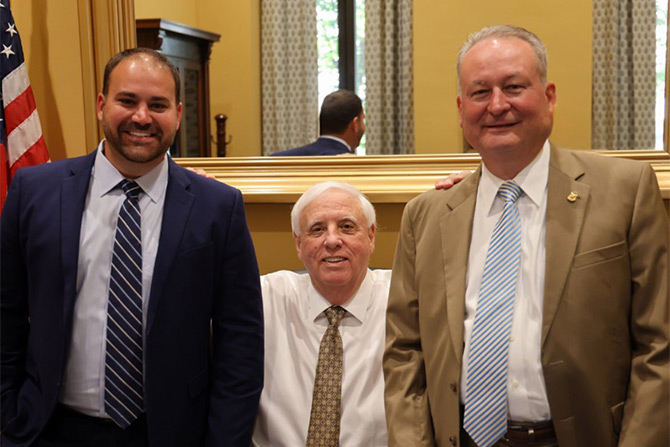Risking repetition, I appreciate that I frequently write about the importance of compliance. Nevertheless, it would be a mistake for us to believe that because the courts struck down the Federal Trade Commission’s Vehicle Shopping Rule (aka CARS), the emphasis on advertising and compliance practices with voluntary protection products has lessened. Quite the contrary, many states are drafting their own mini-Vehicle Shopping Rules to implement. For example, California has just passed a law addressing advertising practices and granted consumers a three-day return right on used motor vehicles costing under $50,000.
Advertising
I wish to emphasize again the importance of properly advertising the correct price, the “offering price” of a motor vehicle. I encourage motor vehicle dealers to review their dealership practices to ensure that we are not including rebates that do not apply to everyone, overstating the availability of a lower interest rate, or pricing that excludes “add-ons.” We need to ensure that our advertising clearly displays the full purchase price of the vehicle. While we have long discussed “trigger terms” for retail and leased motor vehicles, the emphasis today seems to be on pricing that does not accurately reflect the actual price that a consumer would pay to purchase the motor vehicle. It is important that those responsible for advertising understand their legal duties and not fall into the trap of thinking that all is well because we have always done it that way or everyone does it.
Fair Pricing Policy
Second, I encourage all motor vehicle dealers to develop a fair pricing policy. The National Automobile Dealer Association (NADA) has created a guide that has been made available to all motor vehicle dealers. I encourage all motor vehicle dealers to have a policy setting the maximum price on voluntary protection products, such as service contracts, gap and other products and services. While we can certainly negotiate a price down, I strongly caution against arbitrary pricing by our F&I managers or sales managers. This could result in claims of discrimination and may lead to an embarrassing discovery of profits far outside regular or average ranges.
Document, Document, Document
I cannot overemphasize the importance of paperwork disclosures. Paperwork should disclose the nature of the product, its terms, price and clearly indicate the consumer’s decision to purchase. I would hope that a voluntary protection product would be clearly disclosed upon a motor vehicle purchase agreement, a retail installment contract and individual paperwork related to that particular voluntary protection product. A customer should normally sign at least three documents in their decision to purchase the product. If the dealer uses a menu system that shows the voluntary protection product being purchased by the consumer, we have the opportunity to have four documents evidencing the voluntary purchase.
Decrease Legal Exposure
Motor vehicle dealers face legal exposure on both sides of a transaction when we are sued or a claim is made concerning the purchase of a motor vehicle. We need to avoid exposure by consumers and, secondarily, from our indirect lenders. To clarify, if a lender is named as a party to a civil action arising from the sale of a motor vehicle in which we engaged in indirect financing, the lender will look to the motor vehicle dealer for defense and indemnification. Indirect lending contracts are extremely lender-friendly and typically contain language that holds a motor vehicle dealer liable to the lender for any claims arising from the purchase of a motor vehicle.
While most dealers have consumer compliance coverage, and fortunately, we have seen those limits increase over the years, they are still limited. Consumer complaint coverage normally has what is called “eroding” limits, meaning that the available policy limit is decreased by defense costs, which limits the monies available to pay any claim, or a dealer’s indemnity monies.
Further complicating legal exposure is that consumer claims are “fee-shifting,” meaning that we are also exposed to the consumer’s attorney fees. Complicating this long-standing dynamic is that courts have significantly increased their attorney fees awards to the $600 to $800 per hour range. I have my personal opinions on that, but they are beyond the scope of this article.
So how do we protect ourselves? Obviously, the answers are simple; the challenges lie in implementation and demanding strict compliance with our policies. Documentation should not be rushed and should be explained to the consumer. We have numerous opportunities to evidence a consumer’s intention to purchase a product or service. I have long believed that the difference in time required by the F&I manager to rush through a transaction as opposed to slowing down and explaining products and services more thoroughly takes only an extra few minutes. Signatures and initials should be obtained where needed to indicate permission to either purchase or decline a voluntary protection product.
Compliance Audits
I also encourage the development of an audit program as part of our overall compliance. For example, if we audit a certain number of retail files from every F&I manager on a monthly basis, we can easily catch systematic issues and immediately correct. Additionally, we can capture those inadvertent or occasional mistakes. Regardless, it gives us the opportunity to tailor our compliance training and emphasize the importance of overall paperwork and disclosure.
If assistance is needed with a compliance program, I am aware of reputable vendors that provide support to our West Virginia dealers. Likewise, our association and I are always available to assist and answer your questions. Stay safe out there.









